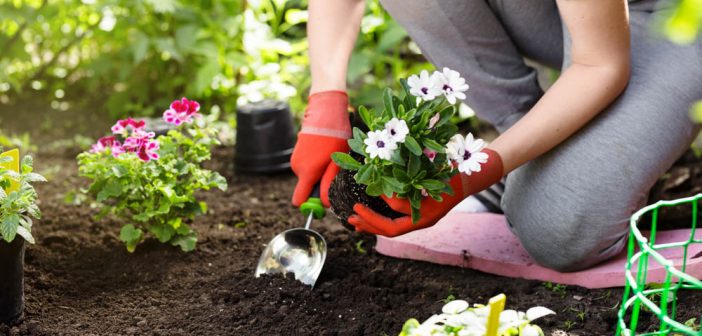Do you want the beauty of your flower beds to last well into the fall? The trick is to plant flowers that bloom late in the growing season and enjoy cooler weather. Here are some colorful additions to your flowerbed that display their most exceptional beauty in the autumn.
Chrysanthemums

Chrysanthemums, or ‘mums’ for short, come in gorgeous fall colors such as red, pink, peach, orange and yellow. Not only are mums colorful, but they also come in a wide variety of sizes, from tiny, two-inch mini-mums to huge plants that grow up to several feet across.
Planting and caring for your chrysanthemum remains relatively simple. If you buy your mums in the fall, they don’t have a chance to establish a strong root system before winter. But they’re reasonably priced so that you can buy more next year. If you plant mums in the spring, they can be grown as a perennial. Next, you should choose a hardy mum rather than a florist mum. Florist mums were intended to be cut flowers and may not be as strong as the hardy mum. Also, florist mums won’t survive cold winter weather.
Plant your mums in well-drained soil in an area of your garden that has partial sun. Leave from six inches to a foot between each plant. Water mums frequently. During the autumn, place several inches of mulch over your chrysanthemums to protect them over the winter. When your mums bloom in the spring, pinch them back, so the plant flowers again in the fall.
Pansies
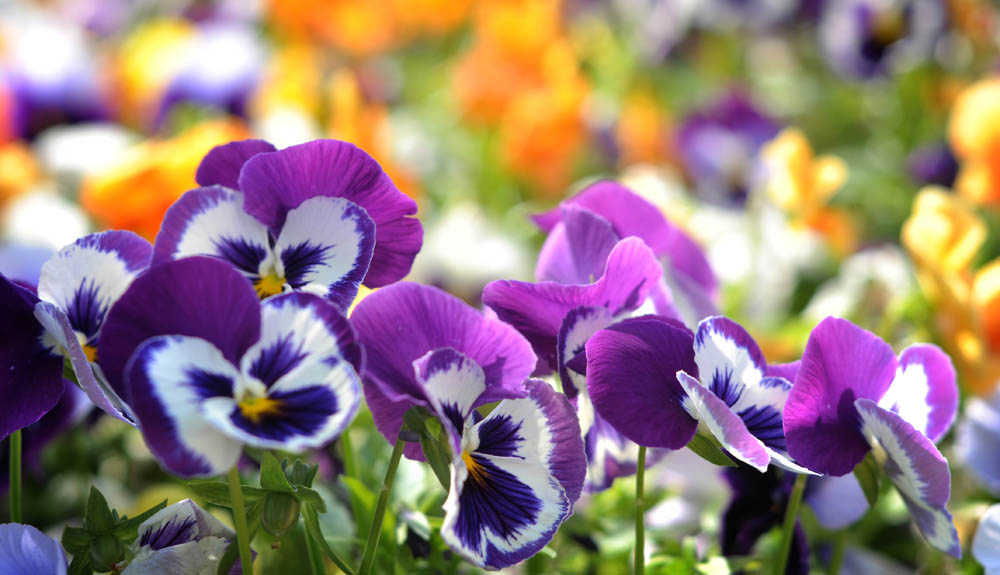
If you’re looking for both spring and fall color, know that pansies come in nearly every shade of the rainbow. While the flowers don’t do as well in the hot summer, they thrive in the cool, crisp air of autumn. You can purchase pansies that grow in mounds as a ground cover, or in the ground or trail from hanging baskets. Planting pansies in the autumn might also give your garden pansies in the springtime, too. Pansies aren’t perennials, but they do self-seed quickly.
Celosia
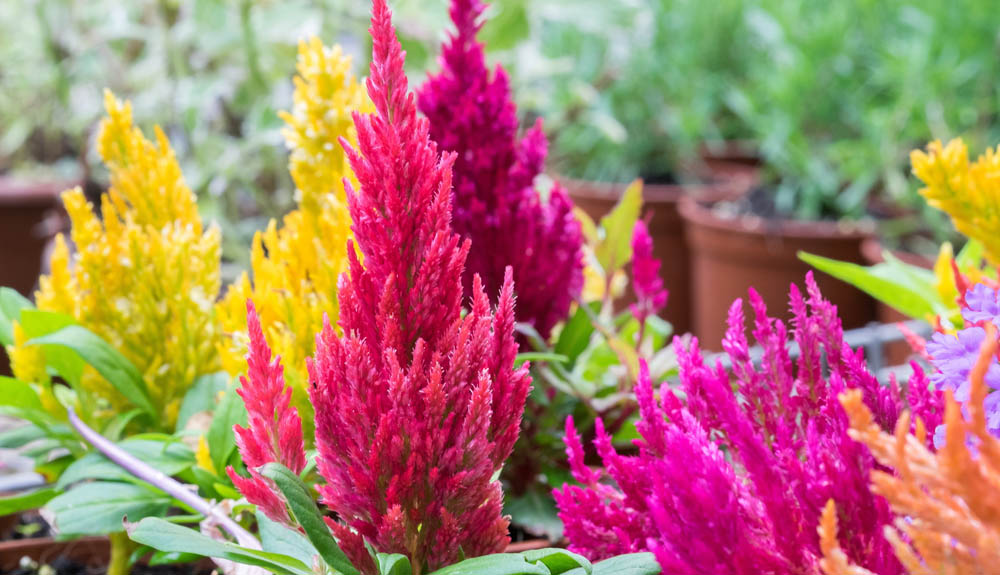
Celosia, or ****’s comb, comes in perfect fall colors such as gold, red, burgundy, and yellow. Celosia is an annual that adds interest to your garden because of the fuzzy texture and vertical growth. If you’d like to add some serious “pop” to your garden, celosias remain the plants for you. You can choose from cockscomb celosia, which looks like swirly coral. Or you can select the wheat-like flowered variety of celosia.
The most important thing to know about celosia remains that it needs full sun and as much of it as possible. So if your flowerbed has a sunny spot that’s too much for many plants, place your celosia plants there. They prefer well-drained soil and plenty of water.
Celosia’s intriguing flowers function as annuals in most areas, but can also be perennials in zones 9-11. They reseed readily. If you don’t want more celosia next year, cut the flower heads off before they set seeds. However, if you want a care-free plant, celosia remains an excellent choice for your fall flower beds.
Asters
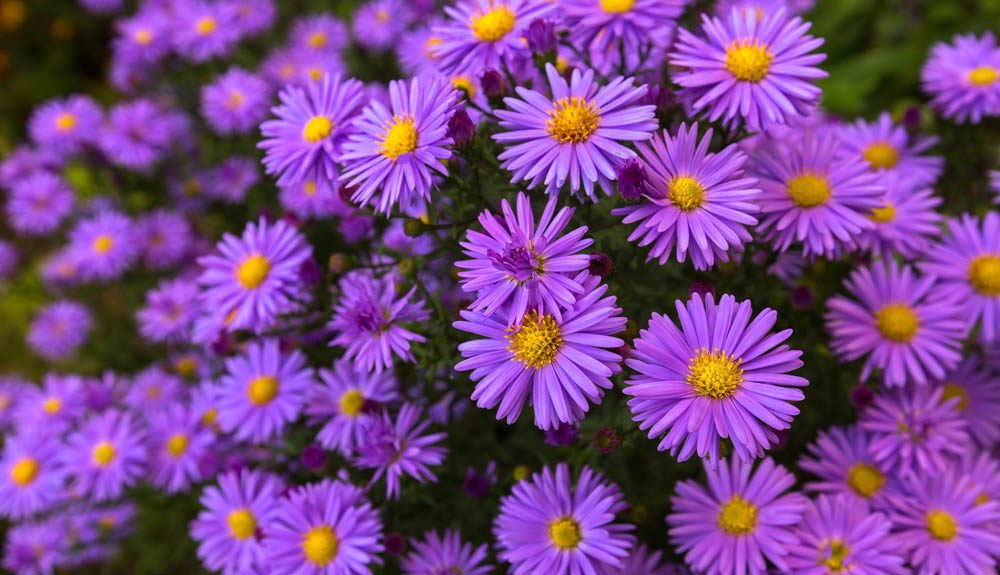
Asters become available at about the same time as do chrysanthemums. If you like purple, pink, white, and blue daisy-like flowers, you’ll love asters. Butterflies and bees are drawn to your fall flowerbeds by asters, too. You may grow asters as either annuals or perennials.
Asters grow from eight inches to eight feet tall. These lovely flowers prefer cool, moist summers. The flowers don’t tolerate hot afternoon sun. Mulching around the plants will keep them moist and cool. To keep them growing and blooming, pinch the blossoms off once or twice during the summer. Mature asters self-seed, but hybrid asters don’t self-seed true. Divide your asters about every three years to maintain their plant and flower quality.
Asters make excellent cut flowers as well as a welcome addition to your fall flowerbeds.
Dianthus
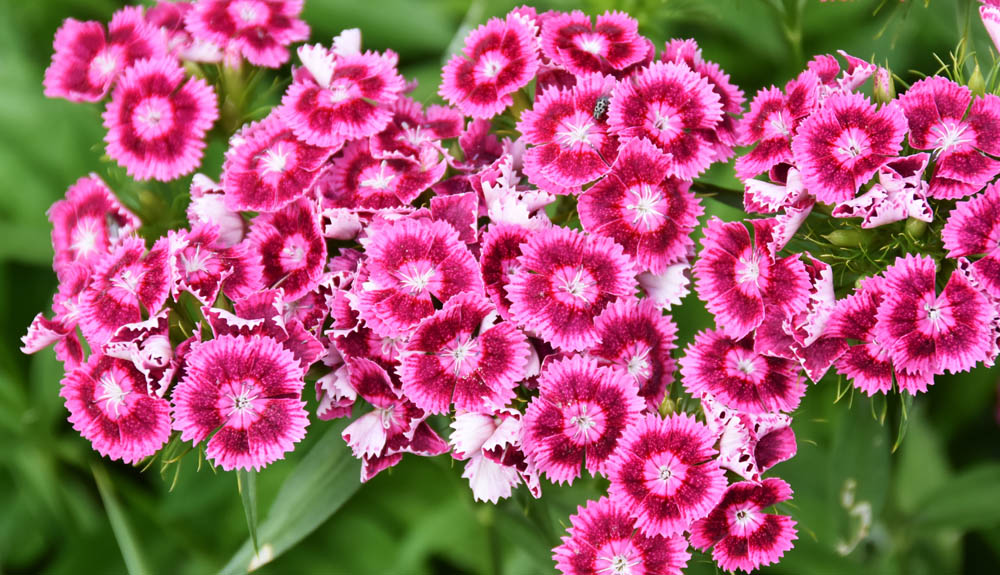
Dianthus, or pinks, come in colors such as pink, red, and purple. Carnations are a part of the dianthus family, so the dianthus flower smells very sweet, and like cloves and cinnamon. Depending on the variety, dianthus remains either a hardy annual, biennial or perennial. If you’d like a shorter flower with a bright burst of color, the dianthus might be the posy for you. The dianthus generally blooms from May to October, making them perfect for a spot of color in the fall garden.
To grow dianthus, plant the seeds in an area where they’ll get at least six hours of full sun. They love well-drained, alkaline soil. Leave anywhere from 12 to 18 inches of space between plants.
Sweet Alyssum
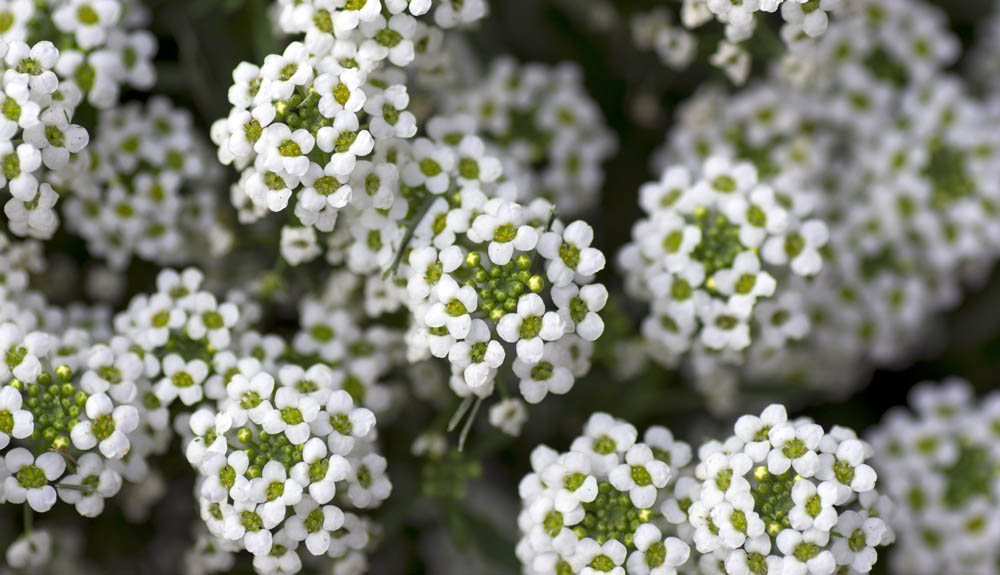
Sweet Alyssum is an amazingly heat-tolerant and hardy during droughts. The flowers smell nice, and the plant self-seeds easily. This tiny plants only grow to a height of six inches at the most. Sweet alyssum comes in pink, purple, peach, white and yellow. If you cut back the spent blossoms, the plant readily blooms multiple times.
Sweet alyssum needs moderate moisture and well-drained soil. Plant these dainty flowers after all danger of freezing has passed. Sweet alyssum prefers full sun, though it tolerates partial shade well. You’ll need to keep the area around your sweet alyssum weed-free, as weeds are too much competition for these tiny flowers.
Black-Eyed Susan

Rudbeckia or black-eyed Susan’s have large daisy-shaped flowers that are bright gold. These perennial plants reach about three feet tall and spread to about three feet wide. They have deep brown centers. Black-eyed Susans are related to the sunflower family and look like small sunflowers that grow to about three inches wide.
Butterflies and bees love the black-eyed Susan. Deer don’t like the plant, which makes it a great deer-resistant flower. Black-eyed Susans prefer full sun and like moist soil. This sturdy plant can tolerate difficult growing areas, however.


